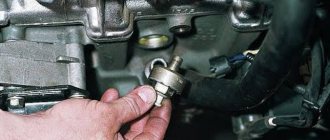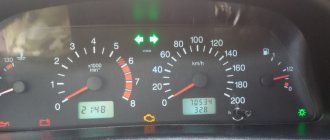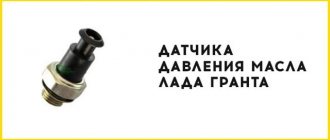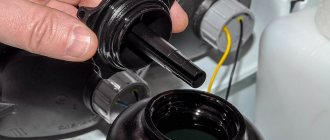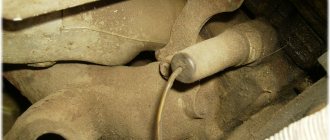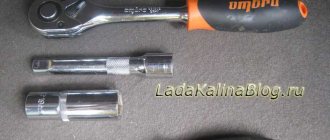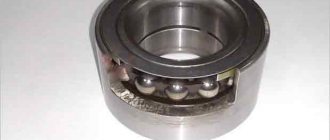Car problems are unpleasant for every driver. If a metallic clanging occurs in the engine (we are talking about a Chevrolet Niva car), first of all pay attention to the knock sensor. Most often, its breakdown causes power unit failures.
You will learn from the article how to replace the knock sensor on a Niva Chevrolet, its functions, location, signs of inoperability, causes of failure, and testing methods. The information will help you make the right decision during an emergency.
Problems with engine detonation on a Chevrolet Niva car
The problem of detonation is also familiar to the Chevrolet Niva. Coming from an SUV family, the Niva has the peculiarity of frequent trips not only off-road, but also in hills and mountainous areas. Therefore, when climbing at low speed and in high gear, you sometimes hear the sound of a metallic clatter. This phenomenon can lead to the following types of problems:
- Engine failure resulting from the action of a destructive force on the cylinder head and crank mechanism;
- Burnout of the cylinder head gasket (cylinder head), which occurs when the temperature rises to critical values during detonation. Often the first one to become unusable and requires immediate replacement;
- Piston burnout. Corrosion of the piston crown appears and with frequent exposure to this phenomenon, it leads to burnout.
Therefore, it is necessary to control the operation of the engine when moving up at low speeds and in high gear. Detonation can contribute to the failure of the cylinder block, pistons and crankshaft of a Chevrolet Niva, which can only be corrected by replacing them with new ones, which will be practically very expensive.
The true reasons for the occurrence of this phenomenon on the Chevrolet Niva
All cars are susceptible to this phenomenon. The main reasons that lead to this effect are:
- Circumstances under which the Chevrolet Niva is operated. This is exactly the case when climbing a steep hill at a speed below 40 km/h and in fourth gear;
- Quality of the fuel mixture. If the octane number is low, then detonation is guaranteed. A high number ensures detonation resistance;
- Design characteristics of the motor. These include: the condition of the spark plugs and their location, the shape of the combustion chamber, the compression ratio and the shape of the piston.
What methods of protection are provided in Shnivy against detonation?
Chevrolet Niva is equipped with a knock sensor. It is designed to protect the motor from this effect, as well as to display the process of its occurrence in the form of a light alarm. The sensor is a sensitive element made of piezoceramic material. On the Chevrolet Niva it is located in the area of the cylinder block. The operating principle of the sensor is as follows:
- When the phenomenon of engine detonation appears, the amplitude of its vibrations increases;
- The built-in controller on the instrument panel corrects the ignition timing, which helps to dampen the phenomenon;
- The signal to the controller is supplied by a sensor, which generates an incoming voltage signal that occurs under certain engine vibration parameters;
- The controller is also capable of displaying a sensor malfunction in the form of a light alarm on the instrument panel. The alarm is represented by the inscription “CHEK ENGINE”, familiar to all drivers, which is highlighted in red.
This is interesting: Tuning Lifan Solano with your own hands: interior, chip tuning
Where is the knock sensor located and what is it responsible for?
Depending on the make of the car, the location of the sensor may vary, but it is always located on the engine body.
The part itself is very small, about the size of a matchbox. Detonation is one of the main defects of an internal combustion engine; it has considerable force and cannot be neglected. Among a dozen different sensors used to optimize the operation of internal combustion engines, the knock sensor is directly used to prevent detonation combustion of fuel.
The process of fuel detonation can be well controlled thanks to its main feature - the appearance of high-pitched and ringing metallic sounds, which, based on symptoms, are sometimes mistaken for the clicking fingers of the cylinder-piston group.
The force of detonation is enormous; if the detonation prevention systems malfunction, the engine will fail after 5-6 thousand kilometers.
You can check the sensor:
- using a multimeter;
- testing the ECU mode with the engine running;
- equivalent replacement with a working sensor.
The first sign of a malfunctioning knock sensor is an error indication on the dashboard.
The functionality of the sensor or its malfunction is checked by the computer, and if there is no control signal of the required shape and level, the microcomputer switches to the mode of checking the sign of sensor malfunction.
If the adjustment does not help, the ECU increases the level of enrichment of the fuel mixture, while simultaneously reducing the ignition timing. Such an algorithm is dictated by the need to prevent, first of all, timing malfunction and further destruction of parts of the cylinder-piston group.
One of the most popular domestic passenger cars is the Chevrolet Niva. This all-wheel drive vehicle has a gasoline engine and is classified as an SUV. Based on this, the Niva has a tendency to frequently travel over bumps and off-road. The operating conditions of this vehicle are conducive to providing maximum engine protection.
The first sign that can be noticed is the so-called detonation. In other words, a knocking sound in the engine. One of the parts of electronic vehicle control systems is the knock sensor. Despite its small size, it performs the most important functions in a car.
Typical breakdowns
Be sure to listen to how the engine operates as the load increases - if even the slightest metallic clatter appears, be sure to make a diagnosis.
Otherwise, you may experience the following problems:
- Burnout of the gasket under the cylinder head. When detonation occurs, the engine temperature increases.
- Destruction of the pistons, as they all corrode.
- Very often, elements of the crank mechanism and cylinder head are destroyed.
If you are driving your car up a hill and the gear is in high gear, be sure to monitor the engine. If you subject the engine to heavy loads, you will contribute to the appearance of detonation knocks. As a result, many elements of the car will fail, and this is the first step towards a major overhaul.
What are the main elements it consists of?
The detonation controller is a complex assembly containing the following elements:
- connector where the power cable is connected;
- threaded connection to the block;
- sensitive element.
The sensor is made in a closed housing and cannot be repaired if it breaks. If there are any problems, the entire part should be replaced.
Verification methods
It is easy to check the inoperability of the DD yourself without dismantling it by conducting preliminary testing.
How to do it:
- put the engine at idle speed (about 2000 rpm);
- lightly tap with a hammer near the sensor.
A drop in engine speed (which will be audible) will indicate the serviceability of the part . If the speed remains unchanged, then the piezoelectric element is tested additionally. To do this, the DD will need to be removed by unscrewing the mounting bolt and disconnecting the block.
Then use a voltmeter or multimeter .
The procedure is as follows:
- connect the tester to the DD contacts;
- set constant voltage mode;
- Using light taps on the sensor, monitor the meter readings.
Voltage fluctuations of up to 0.2 volts are a sign of the operating condition of the DD . If there are no voltage surges, it means it is damaged and must be replaced.
This is interesting: Timing chain ZMZ-405: do-it-yourself replacement
in our VKontakte group
DIAGNOSE YOUR CAR YOURSELF!
engine crankshaft speed is more than 1300 rpm; coolant temperature above 60°C; the amplitude of the knock sensor signal is above the threshold. If a permanent malfunction occurs, the “CHECK ENGINE” lamp lights up after 2 drive cycles.
1. The existence of conditions for the occurrence of code P0328 is checked.
2. The serviceability of the screen of wires 2 B and 88 G is checked.
1. Connect the adapter cable to the diagnostic connector. Start the engine and warm up to a coolant temperature of 60°C. Set the engine crankshaft speed to more than 1300 rpm.
Code P0328 is intermittent. If it is currently inactive and there are no other codes, analyze the conditions under which the code occurred. Check by ear the operation of the engine for the presence of extraneous metallic noises and knocking (valves are not adjusted); if found, eliminate them. Make sure that the sensor wiring harness is not routed near high voltage wires. See the “Checking the Knock Control System” card.
2. Check the serviceability of the screen and the connection between the screen and engine ground. Check the tightening torque of the knock sensor mounting nut.
If comments are found, the sensor or controller is faulty.
If there are no comments, fix the problem.
After repair, start the engine, reset the codes and make sure there is no signal from the “CHECK ENGINE” lamp.
We only find out where the knock sensor is located when we encounter problems with it. And before we talk about its location, it is worth understanding what this element is and what it is needed for. Let's start with this!
Where is it located?
Many people wonder where to find this knock sensor?! The location of the knock sensor is in the engine compartment of the Niva, namely on the cylinder block near the oil filter.
The location of the sensor is determined by the fact that this is the most sensitive area for detecting various engine detonations. This helps to quickly localize the problem in order to avoid engine breakdowns.
Price and article
Below is a table with prices for knock sensors for Niva from manufacturers that have proven themselves well in the market.
| Manufacturer | vendor code | Price, (rubles) |
| LADA (original) | 21123855020 | 200-400 |
| "Road map" | 21123855020 | 250-360 |
| Fenox | SD10100O7 | 200-400 |
| ERA | 550489 | 300-400 |
| Decaro | 2112-3855020 | 380-500 |
Sensor cost
The knock sensor has extremely low maintainability. Usually, when it fails, it requires replacement with a new DD. The original General Motors sensor has part number 21120-3855020-02-0. Its price is 450-550 rubles. If there is a need to change the DD, then you can purchase an analogue. The table below presents the best alternative options for a branded product.
Table - Good analogues of the original Chevrolet Niva knock sensor
| Manufacturer | vendor code | Approximate cost, ruble |
| Bosch | 0 261 231 046 | 850-1000 |
| Fenox | SD10100O7 | 500-850 |
| Lada | 21120-3855020 | 190-250 |
| AvtoVAZ | 211203855020020 | 300-350 |
| EPS | 1.957.001 | 400-500 |
Is it possible to avoid detonation?
Pay attention to where the knock sensor is located on the Chevrolet Niva. It is located in the center of the engine block. The distance from the sensor installation location to the 1st and 4th cylinders is the same, thanks to this it allows you to capture all detonation knocks that appear in the internal combustion engine.
And in order to eliminate the possibility of detonation, it is enough to follow a few simple rules:
- When you drive your car uphill or off-road, you need to downshift. It is desirable that the engine operates at a frequency of 2500..3500 rpm.
- Monitor the condition of the spark plugs - the quality of ignition of the mixture depends on them. It is better to occasionally check the compression in each cylinder.
- It is not recommended to use gasoline with a low octane number. It is advisable to fill the tank only with fuel recommended by the car manufacturer.
Checking the sensor for functionality
Checking the knock sensor is quite simple. To do this, you need to know the nominal resistance of the working sensor for a specific engine model. After this, the sensor is removed from the cylinder block and its resistance is measured using a multimeter. In case of any deviation from the norm, the sensor must be replaced. Its price is in the range of 1200-1500 rubles, depending on the car model.
You can also check the sensor status more accurately. To do this, you must also remove it from the engine. The multimeter is switched to the 200 mV measurement mode, the probes of the device are connected to the sensor ground and the signal terminal, respectively. After this, holding the sensor in your palm, you need to shake it or lightly hit it on a hard surface. As a result of vibration, a voltage in the range of 15-30 mV will be generated depending on the sensor model.
When installing a new sensor, the nominal tightening torque must be observed, which affects the accuracy of the device readings. Good luck with your diagnostics and smooth roads!
Warning lamps on the instrument panel
The knock sensor, like other devices installed in the car, tends to periodically fail
This can be caused by various reasons, and often a minor breakdown can be accompanied by a complete failure of such an important component as the engine
Among the most popular reasons for failure of the knock sensor are:
- wire break;
- insulation damage;
- breakage of the shielding braid;
- problems in the operation of the sensor itself;
- breakdowns in the software or hardware of the internal combustion engine control unit.
Checking the knock sensor will allow you to diagnose the malfunction. This is carried out using special measuring instruments or through visual inspection of the device.
So, for example, if there is a suspicion that a short circuit has occurred during the operation of the sensor, you will need to turn off the ignition and disconnect the device from the electronic control unit (ECU). Only after this will it be possible to begin checking the structure using an ohmmeter.
Sometimes the functionality of the wiring connected to the sensor is checked using a voltmeter. This is done with the ignition on. The device measures the indicators between the socket contacts and ground.
It is recommended to check the sensor itself using a multimeter. To do this, during testing, you should create artificial vibration by knocking on the device body. If the device data does not change, it means the element has failed.
If the first signs of malfunction of the DD appear, then before making a decision on replacement, it is necessary to check the performance of the meter
First of all, you should pay attention to whether there is an error on the on-board computer screen. If the DD produces too high or low a signal level, this is detected electronically and the driver receives an alert
You can accurately check the serviceability of the DD only on a stand. All other methods only indirectly indicate the performance of the device.
First of all, it is important to check the resistance between the contacts. In normal condition it should be about 5 MOhm
Any significant deviation indicates a malfunction of the meter.
Another test method is to measure voltage. To do this you should:
Remove the sensor. Connect a multimeter or voltmeter to the terminals. Using a small metal object, such as pliers or a bolt, tap the working torus of the meter. Check the information on the device. If there are no voltage surges, then the sensor is unsuitable for further use.
It is important to take into account that even if there are voltage surges, this is not a reason to consider the DD to be fully operational. The ECU operates in a narrow range of amplitudes and frequencies, the correspondence of which cannot be detected with a multimeter or voltmeter.
HOW TO CHANGE THE KNOCK SENSOR on a Niva #AutoFormula 4x4
In order to independently change the knock sensor on a Chevrolet Niva, you must follow the instructions below.
Disconnect the terminal block.
Move the connector to the side so that it does not interfere with further dismantling.
- Using a 13mm wrench, unscrew the DD fastening bolt.
- Remove the sensor.
- Install a new sensor.
- Connect the connector.
Engine operating principle
Detonation very often occurs when going uphill. In this case, the car is moving slowly, and the speed is increased. But do not worry, since this phenomenon is called glow ignition, and it does not indicate that the engine is not working properly.
Any internal combustion engine works according to the following principles:
- A mixture of gasoline and air is supplied to the combustion chamber of the cylinders, where it is ignited by a spark on the spark plug. Moreover, the piston should be literally a few millimeters from top dead center. As soon as the piston reaches the top position, the greatest pressure is generated in the cylinder. At this moment, the entire air-fuel mixture will completely burn.
- During normal operation of the knock sensor on the Chevrolet Niva, signs of this phenomenon will not appear. This device will help get rid of the manifestation of detonation. And it appears when the mixture begins to ignite much earlier than it should. This usually happens halfway to top dead center. And when the air-fuel mixture burns, a force is exerted on the upper part of the piston, which pushes it in the opposite direction. At the same time, the engine power is reduced, and significantly, and its parts wear out.
How to check the knock sensor?
Unfortunately, the knock sensor can also fail. In this case, a person without special knowledge will be able to notice this only by the lit indicator. No other obvious signs will be noticed. The car will continue to operate in the same mode and start without any signs of breakdown.
At this point, it is necessary to remember that this device is not mechanical, it is part of an electronic system, and therefore the breakdown is considered electronic.
A knock sensor malfunction can happen for a number of different reasons, including:
- There has been a breakdown inside the sensor itself.
- Closure.
- The signal wire or braided shield is broken.
- Damage to the engine control unit.
Thus, it will not be difficult to identify the breakdown. In order to determine it, it is necessary to conduct a test.
But those who are not looking for easy ways can always carry out this simple process on their own. Self-checking occurs according to the following scheme:
- First, we remove the protection in the garage. You will have to work directly with the engine block.
- Now we rule out a break in the signal wire and shielding braid. If it is torn or the braid is torn, you need to check the fastening of the plug and socket of the sensor. The integrity of the braid must be checked.
- If a break is excluded, the outlet itself is assessed. It is possible that its connection is faulty and requires replacement.
- You can detect faults in the device itself using a voltmeter. In this case, the car must be started and idling.
- You also need to check the condition of the device contacts.
Also interesting: Chevrolet Niva temperature sensor: where is it located, replacement
You can check it yourself in a slightly different way. For this you need a multimeter. This device is very often found among car enthusiasts.
Checking the knock sensor with a multimeter is carried out only after it is removed from the engine. When checking, they knock on it with something metal. This method is the simplest.
We set the range to 200 mV, connect the positive and negative wires to the sensor terminal and to the metal ring, respectively. Do not confuse ground and signal pin! Now you need to hit it with something metal, but not too hard. The sensor will have to detonate.
You can check the sensor with another device called an oscilloscope. It will allow you to study the signal more qualitatively.
Now you need to tap the sensor lightly. The device will show detonation.
If the sensor detonates, then it is working, and the breakdown must be looked for elsewhere. But if the knock sensor signal is low or there is no signal, then this is a malfunction.
Causes of breakdowns
Failure of the pressure sensor circuit occurs for various reasons . Any of them can cause engine detonation. A thorough examination and diagnosis will help determine which one.
It could be:
- unsuitability of the piezoelectric element itself;
- outgoing cable break;
- sensor short to ground;
- lack of contact in the connector block;
- damage to the shielding braid.
Under no circumstances should you delay troubleshooting . The consequences of detonation can be very serious, namely, they will cause damage to the engine itself.
How is the car’s built-in protection against detonation implemented?
In order to monitor engine operation, a knock sensor is installed in the Chevrolet Niva. When problems occur, it sends a signal to the dashboard, where an alarm light sensor appears. The sensor design itself is a particularly sensitive piezoceramic element, which is located in close proximity to the cylinders. It reacts to the occurrence of increased vibrations that appear as a result of engine malfunctions. After which the ECU begins to send a signal to correct the ignition timing. In this case, the signal received by the controller produces an additional light signal on the instrument panel in the form of the CHEK ENGINE icon.
What to do in case of malfunctions - removing and replacing the sensor in a Niva Chevrolet: detailed instructions
The failure of the engine is indicated by the illuminated “Check-engine” icon located on the dashboard, as well as by pronounced noise in the engine. Replacing the part will help eliminate the cause. You will need a 13mm wrench and a screwdriver. The sensor seat is located between the second and third cylinders.
Sequencing:
- For ease of access to the exhaust pipe, unscrew the bolt securing the front exhaust pipe strut; move the spacer to the side.
- Disconnect the connector connecting the sensor wire to the cable of the electronic control unit.
- Unscrew the sensor mounting bolt.
- Remove the sensor.
- Check it for serviceability, replace if necessary.
Installation is carried out in reverse order.
Search
The Chevrolet Niva knock sensor is necessary to ensure smooth engine operation. This allows the engine to function normally in all operating modes. Using ignition timing and fuel injection configuration, maximum power can be obtained. Knock. This is one of the defects that can really damage the engine. This happens because the fuel mixture burns in the combustion chambers of the cylinder.
Knocking noise is very common when climbing a mountain. At the same time, the car moves slowly, and the speed increases. But don’t worry, because this phenomenon is called glowing, and then it does not mean that the engine is faulty.
At least some gasoline engines operate on the following principles:
- A mixture of gasoline and air is fed into the combustion chamber of the cylinder, where it is ignited by a spark at the spark plug. And the piston should be almost a few millimeters from top dead center. When the piston reaches its top position, the greatest pressure is found in the cylinder. At this moment, the entire air-fuel mixture will completely burn.
- During normal operation of the knock sensor on a Chevrolet Niva, there will be no signs of this phenomenon. This device will help you get rid of detonation. And this happens when the mixture begins to burn much earlier, if necessary. This usually occurs halfway to top dead center. And when the air-fuel mixture burns, a force pushing it in the opposite direction will act on the top of the piston. At the same time, the engine power decreases, significantly, and its parts wear out.
On a Chevrolet Niva, the knock sensor error can be read using a special diagnostic scanner.
If there is a fighter, it will show an error code:
- 0327. Extremely low signal from the knock sensor. Most likely, the circuit connecting the sensor to the control unit is open.
- 0328. very high signal level. This may be caused by a malfunction of the device itself.
You may also like
- Mazda 6 What Oil to Pour into the Engine What oil to pour into the Mazda 3 engine: recommendations, approvals Table engine oil from Mazdagid.ru Car owners may be wondering what kind of oil to pour into the Mazda 3 Engine We have compiled a summary table that shows which customers…
- Ford Focus 3 Low Beam Headlight Fuse
What to do if your loved one’s light doesn’t start to shine World Ford Focus of the second generation? This happens at any time with any car. Cigarette lighter for Ford Focus 3, main fuse for low beam headlights. 75. 15. When the lighting… - Which Oil is Best to Fill in a VAZ 2114?
Which oil to fill in a VAZ 2114 gearbox? The VAZ 2114 gearbox oil for the most part determines the absence of problems with the gearbox lever. Choosing the right oil in a VAZ 2114 box, unfortunately, is a very important task. Regular and timely replacement... - Auto sales in China plummet as virus spreads
Auto sales in China fell to a new low in January as the coronavirus kept buyers away from showrooms, adding to the gloom hanging over the industry. Retail auto sales fell 22% to 1.71 million units , which was the most b… - Replacing the Radiator Heater VAZ 2108 High Panel
replacement VAZ 2108, 2109 or 21099 radiator plate If this changes the heater radiator on the VAZ 2108 (2109, in other words, 21099) according to all recommendations, then before this procedure it is necessary to drain the coolant and completely disassemble the panel ... - Heated seats not working Mazda 6 Gh
Heated seatsPublished February 01, 2012 23:11 Heated driver seats, passenger seat, reason? Tell me the possible options for self-removal or is this just a service? thanks in advance Well, let's start, as always, with fuses and...
The Chevrolet Niva is very specific because it is designed for driving on conditions where there are practically no roads. Therefore, any difficulties with this can simply be fatal. The risk of slowing down in the forest increases several times.
Be sure to listen to how the engine operates as it increases the load. Be sure to make a diagnosis if there is even a small iron crack.
Otherwise, you may experience the following problems:
- Burning gasket under the cylinder head. When pressed, the engine temperature rises.
- Destruction of pistons, as they are all corroded.
- Elements of the crank mechanism and cylinder heads are often destroyed.
In this case, if you are driving your car uphill and the crossing is on, be sure to keep an eye on the engine. In this case, if you subject the engine to heavy loads, you will cause detonation shocks. As a result, many auto parts will fail, and this is the first step towards serious repairs.
Pay attention to where the knock sensor is located on the Chevrolet Niva. It is located in the center of the walk-behind tractor. From the location of the sensor, the distance to the 1st and 4th cylinders is uniform, thanks to which it allows you to catch all the knocks that occur in a gasoline engine.
Diagnostics and replacement of Chevrolet Niva phase sensors
And to eliminate the possibility of detonation, it is enough to adhere to several general rules:
- When you drive your car uphill or SUV, you need to lower your gear. It is better for the engine to run at 2500-3500 rpm.
- Watch the candles. The quality of ignition depends on them. It is best to check the compression in each cylinder from time to time.
- Low octane gasoline is not recommended. It is best to only fill the fuel tank recommended by the vehicle manufacturer.
